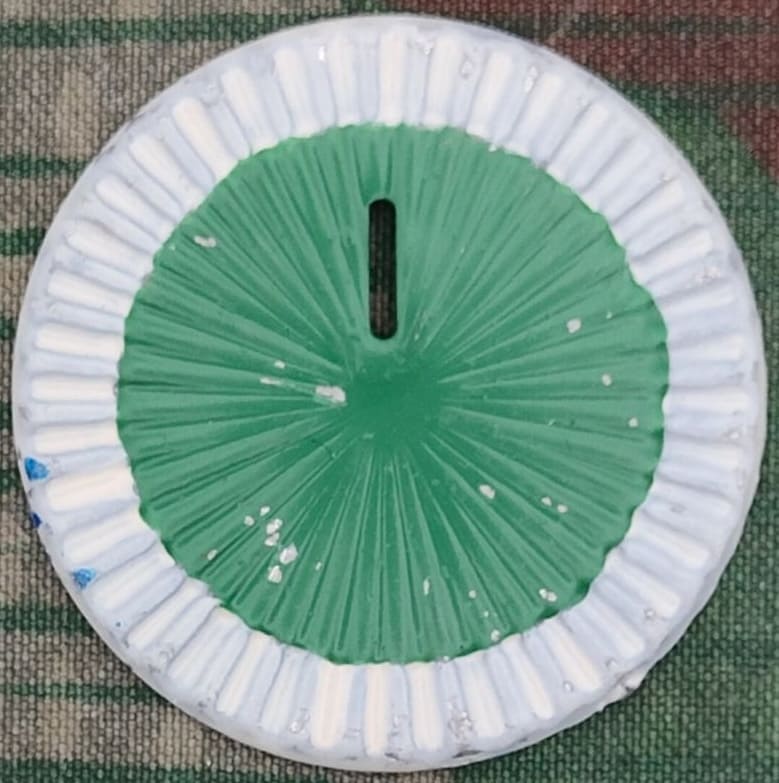Variations of the Flag
![[1/3 white Flag of Vaud]](../images/c/ch-vd3.gif) image
by António Martins
image
by António Martins![[Shadowed lettering Flag of Vaud]](../images/c/ch-vd2.gif) image
by António Martins
image
by António Martins
An often variation, with the lettering not only outlined but
also shadowed.
António Martins, 4 January 1998
![[Simplified Flag of Vaud]](../images/c/ch-vd_w.gif) image
by António Martins
image
by António Martins
A simple white over green bicolor, used, for instances, in license
plates.
António Martins, 4 January 1998
![[Pun Flag of Vaud]](../images/c/ch-pvd.gif) image
by António Martins
image
by António Martins
An often pun, meaning instead "Freedom has gone".
António Martins, 4 January 1998
An oddly colored image from an outside source: A 1911 Swiss postage stamp, seen
at
http://naxum.tripod.com/heraldry/17xch109.jpg (in Nahum Shereshevsky's
excellent thematic philatelic collection, see it fully
here [retrieved]): Black letters, instead
of black-fimbriated golden letters. This must be an often "practical" variation,
as also the letterless variation above.
António Martins, 3
January 2006
Mühlemann (1991) reports that the decree
from 1803 about the cantonal coat of arms doesn't define the colours of the
writing. Initially, he writes, it always was depicted in black. I suppose this has to do
with the printed version (and the seal) on documents which has always been black-and-white.
Mühlemann doesn't define the time when the colour turned
from black to gold. He reports about three green-white military flags with golden
writings, which could explain the origin of the golden letters. The one flag from
1804, white over green, has the golden writing LIBERTÉ ET PATRIE on the upper half and CANTON DE VAUD
on the lower half; the other two are battalion flags from 1819 (white cross "traversante" and
green-white flames) with the same writings in reverse order, also in gold
(picture from [mue91]).
However, the change from black to gold was not radical. There are examples of black writing
when the gold variant was already established, e.g. the flag from 1849 of a
philanthropic society which shows the cantonal coats of arms beside each other.
Martin Karner, 4 January 2006
Colour Flag
Simple rectangular cantonal flag, as shown in Kannik (1956) [So-called
colour flag (Farbenfahne in German). See also postcard from 1903]].
Ole Andersen, 4 August 2002
See also: STATE COLOURS in Dictionary of Vexillology
Flaggen, Knatterfahnen and Livery Colours |
![[Knatterfahnen]](../images/c/ch-vd_kf.gif)
|
Flaggen are vertically hoisted from a crossbar in the manner of gonfanon, in ratio of about 2:9, with a swallowtail that indents about 2 units. The chief, or hoist (square part) usually incorporates the design from the coat of arms – not from the flag. The fly part is always divided lengthwise, usually in a bicolour, triband or tricolour pattern (except Schwyz which is monocolour, and Glarus which has four stripes of unequal width). The colours chosen for the fly end are usually the main colours of the coat of arms, but the choice is not always straight forward.
Knatterfahnen are similar to Flaggen, but hoisted from the long side and have no swallow tail. They normally show the national, cantonal or communal flag in their chiefs.
Željko Heimer, 16 July 2000
See also: HANGING FLAG, VERTICALLY HOISTED FLAG, LIVERY COLOURS in Dictionary of Vexillology
Attempted Flag Change
There will be a new consitution for Vaud canton which will take effect on 14
April 2003, on the bicentenary of the entry of Vaud canton into the Swiss
confederation. There is a motion to change the text on the arms from
"Liberté et Patrie" (Freedom and Fatherland) to "Liberté et
Solidarité" (Freedom and Solidarity). A popular vote will be held in 2002
to accept or refuse this decision adopted by the Constituent Assembly of the
canton (75 in favour, 64 against this decision). Vaud canton is the only
one in Switzerland to have lettering on its blazon.
Pascal Gross, 6 September 2000
It is worth reporting on all the aberrations of the "Constituante" (constituent assembly) which is a group of
people working on the future constitution of Vaud canton. I would not put all the people from Vaud canton
in the same basket as there have been a lot of reactions on all these decisions, and I'm quite convinced
that they will keep the current flag in the new constitution. Effectively, I can't see how they would take
the risk of seeing the constitution refused for "a modification like that" (words of Christelle
Luisier, chief of the radical group).
Pascal Gross, 8 January 2001
Early 20th Century Flag Design

 images located by Martin Karner
images located by Martin Karner(Postmark: 1933 | source) (source)
At the beginning of the 20th century, flamed flags were still in use, with the white cross replaced by
a (baroque) shield in the centre of the flag. These decorative flags had been used until WWII and then
somewhat forgotten in preference of the current cantonal flags. [Today they are being
produced again, see right image]
Pascal Gross, 30 June 2002
See also:
- National flag and other cantonal flags with "Early 20th century flag design"
- Modern flamed flags
- FLAMMES in Dictionary of Vexillology
Logo
logo.jpg) image located by Martin Karner (8 May 2024)
image located by Martin Karner (8 May 2024)(source)
Horizontal Logo
logo_hor.jpg) image located by Martin Karner (8 May 2024)
image located by Martin Karner (8 May 2024)(source)
The horizontal logo was made for institutions and projects which are supported by the Canton.
Cockade
 image located by Martin Karner
image located by Martin Karner(source)
Cockade for the cantonal troops' headgear (regulation from 1869, size: ca. 40 mm, reverse side).
Martin Karner, 14 March 2025
See also: Cockades (Swiss Army)

![[Flag of Vaud]](../images/c/ch-vd.gif) image
by António Martins
image
by António Martins
![[Pun Flag of Vaud]](../images/c/ch-vd!n.gif)
![[Colour Flag VD]](../images/c/ch-vd_56.gif)
![[Knatterfahnen]](../images/c/ch-vd_f.gif)
![[livery colours]](../images/c/ch-vd_ff.gif)